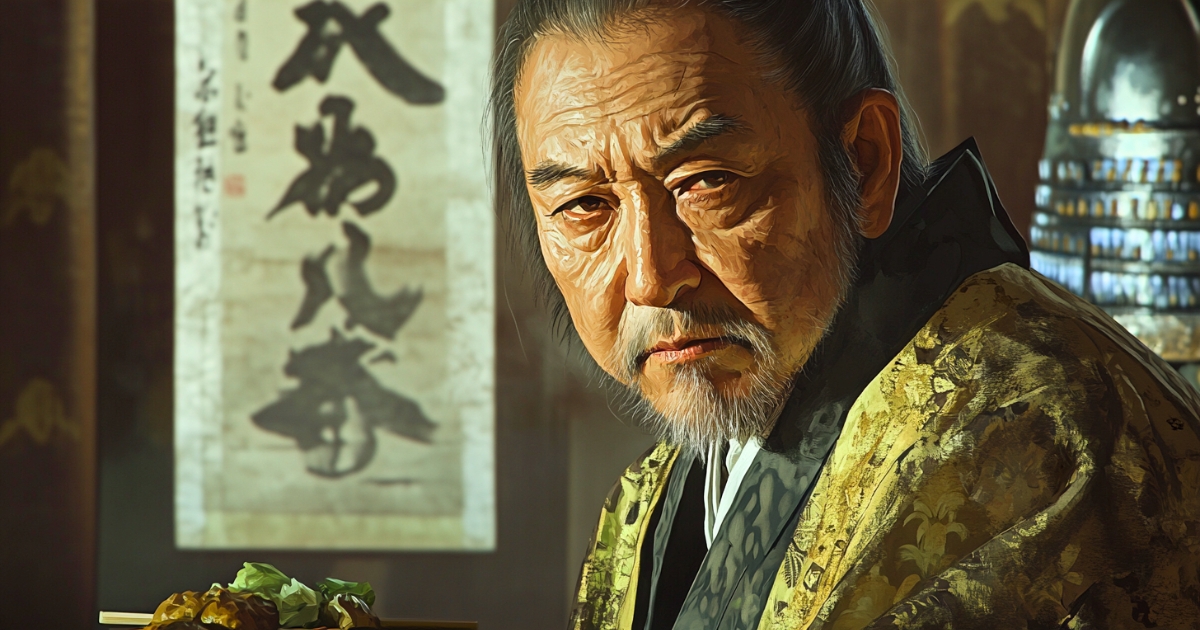Tokugawa Ieyasu is renowned as one of the most influential figures in Japanese history. The Edo Shogunate he established ruled Japan for over 260 years, with its influence extending to the present day. Ieyasu’s achievements weren’t solely due to his political acumen; his longevity and health management played a significant role. This article explores Tokugawa Ieyasu’s dietary practices, examining how he achieved the remarkable age of 73, which was extraordinary for his time.
Please note that while the content presented here is based on widely accepted theories, there are uncertainties about the daily habits of a person who lived 400 years ago.
Tokugawa Ieyasu’s Life and Health
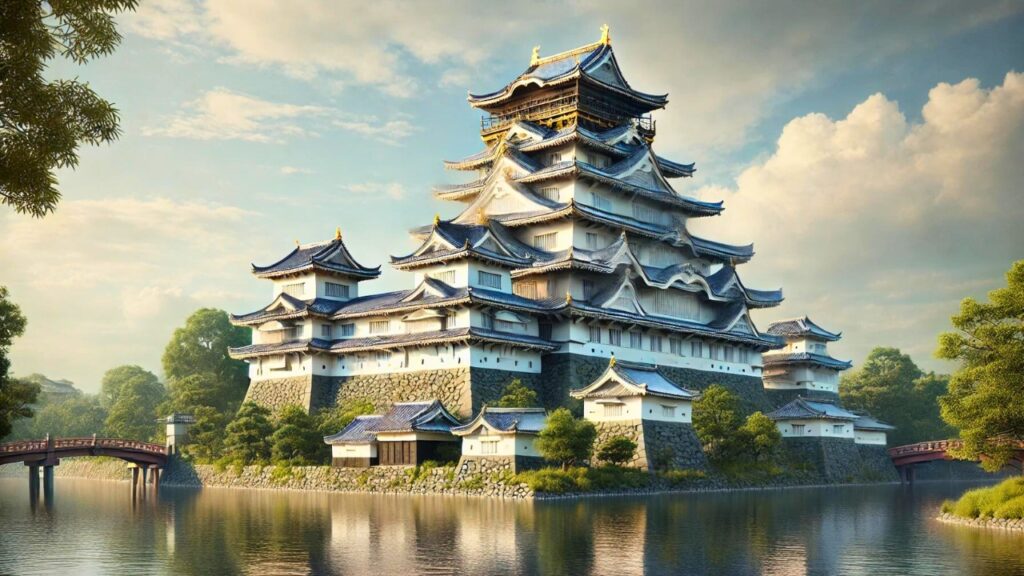
Edo Castle, built by Tokugawa Ieyasu. Although no longer standing, it’s said that his dietary practices were implemented here, laying the foundation for his health and longevity. Image generated by AI
Born in 1543, Ieyasu faced the turbulence of the Warring States period from a young age, often finding his life in danger. However, from childhood, he was extremely mindful of his health, particularly maintaining a strict approach to his diet. This habit persisted even after he unified the country and established the Edo Shogunate.
Ieyasu’s dietary practices were based on the medical knowledge and health philosophies of his time, but they were also unique, stemming from his own experiences and observations. At the core was the concept of “hara hachi bu” (eating until 80% full), which surprisingly aligns with dietary methods recommended in modern nutritional science.
Characteristics of Ieyasu’s Dietary Practices
- Hara Hachi Bu: Ieyasu always aimed to eat until 80% full, never eating to the point of feeling completely full. This reduced the burden on his digestive system and helped prevent obesity.
- Balanced Diet: Ieyasu emphasized consuming a variety of foods. He incorporated a balance of fish, vegetables, and grains, striving to maintain nutritional balance.
- Food as Medicine: Ieyasu viewed food not just as nutrition but as medicine. He focused on the medicinal effects of specific foods and adjusted his diet according to his physical condition.
- Regular Meal Times: Ieyasu emphasized having three regular meals a day. This helped regulate his body’s rhythm and maintain digestive health.
- Local and Seasonal Consumption: Ieyasu prioritized seasonal ingredients and made efforts to use fresh, locally sourced ingredients as much as possible. This led to highly nutritious meals.
Ieyasu’s Favorite Foods and Cooking Methods
Some of the foods Ieyasu particularly favored included:
- Carp: Ieyasu called carp the “fish of longevity” and ate it frequently. Carp is a good source of protein and was considered beneficial for nourishment and strengthening at the time.
- Pickled Plums: It’s said that Ieyasu ate pickled plums daily. Pickled plums have antibacterial properties and were thought to be effective in preventing food poisoning.
- Vegetables: He particularly liked root vegetables and actively incorporated foods like daikon radish and carrots. These are rich in dietary fiber and aided digestion.
- Tea: Ieyasu favored green tea and drank it daily. The catechins in green tea have antioxidant properties and contributed to maintaining health.
Regarding cooking methods, Ieyasu preferred simmered and grilled dishes. These cooking methods were believed to preserve the inherent nutritional value of ingredients and were also good for digestion. He also avoided dishes that used a lot of oil, limiting excessive fat intake.
Relationship with Contemporary Medicine
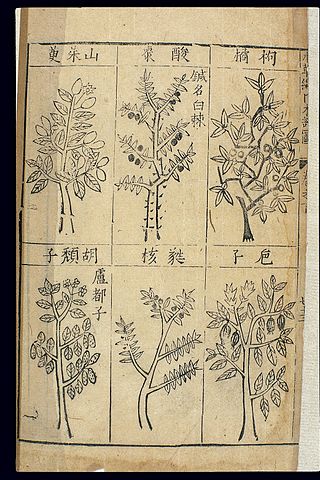
“Bencao Gangmu”: A pharmaceutical book compiled by Li Shizhen of China. It details the effects of various medicinal herbs and ingredients, which Ieyasu might have referenced. Li Jianyuan (Ming period, 1368-1644), CC BY 4.0, via Wikimedia Commons
Ieyasu’s dietary practices were closely related to the medical thoughts of the time. He was particularly influenced by Chinese herbal medicine and traditional Japanese health philosophies.
- Yin-Yang and Five Elements Theory: Ieyasu chose foods based on this theory. For example, he tried to maintain his physical condition by balancing “yang” foods that warm the body and “yin” foods that cool it.
- Adaptation to Seasonal Changes: By changing ingredients and cooking methods with the seasons, he tried to align his body with natural rhythms. For instance, he incorporated more cold foods in summer and warm foods in winter.
- Influence of Health Manuals: Ieyasu read various health manuals and incorporated that knowledge into his diet. In particular, works like Kaibara Ekiken’s “Yojokun” (Lessons in Nourishing Life) are said to have greatly influenced the formation of Ieyasu’s dietary philosophy.
The Influence of Ieyasu’s Dietary Practices on the Edo Period
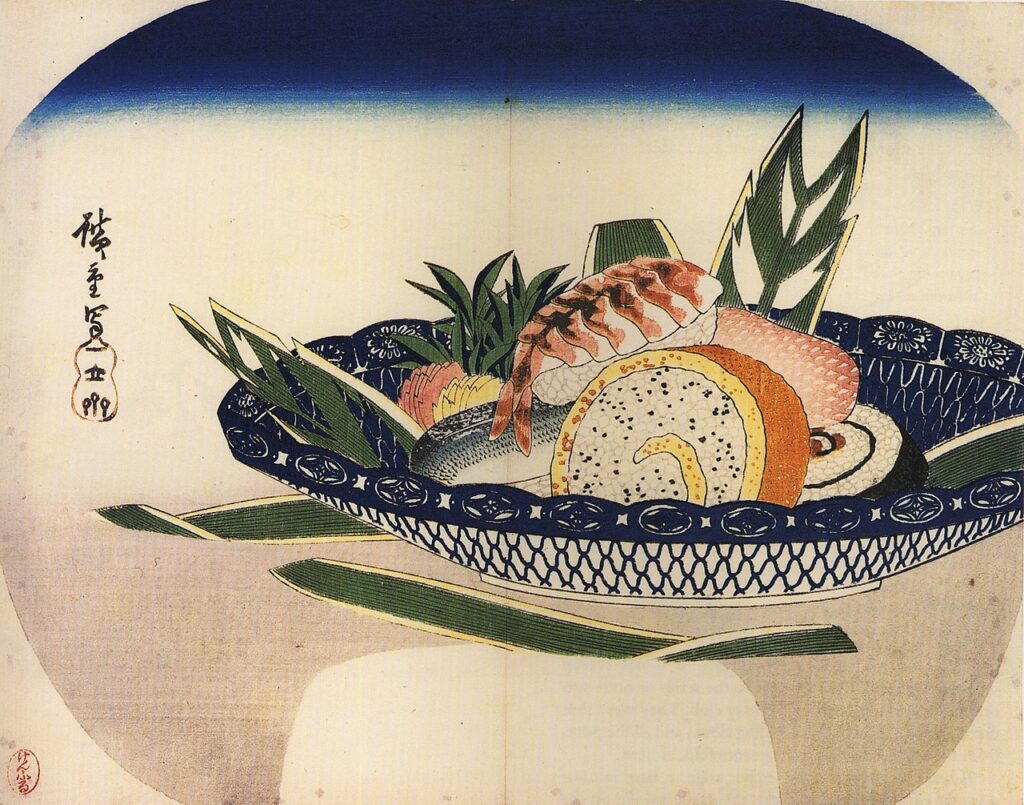
Edo period food culture influenced by Ieyasu.
Ieyasu’s dietary practices were not just a personal practice but had a significant influence on the food culture and health consciousness of the Edo period.
- Spread Among Samurai: Ieyasu’s dietary practices were seen as a model by many samurai, and the importance of health management became widely recognized.
- Permeation to the Common People: As time passed, Ieyasu’s dietary philosophy also permeated to the common people. Especially, the concept of “hara hachi bu” became one of the characteristics of Edo period food culture.
- Development of Japanese Cuisine: Ieyasu’s preferred cooking methods and food choices became the foundation of Edo cuisine and greatly contributed to the development of later Japanese cuisine.
- Popularity of Health Foods: Specific foods that Ieyasu emphasized (e.g., pickled plums, kelp) became widely popular as health foods during the Edo period.
- Spread of Food as Medicine Philosophy: The “food as medicine” concept practiced by Ieyasu was widely accepted throughout the Edo period and became one of the characteristics of Japanese food culture.
Ieyasu’s Wisdom Applicable to Modern Dietary Life
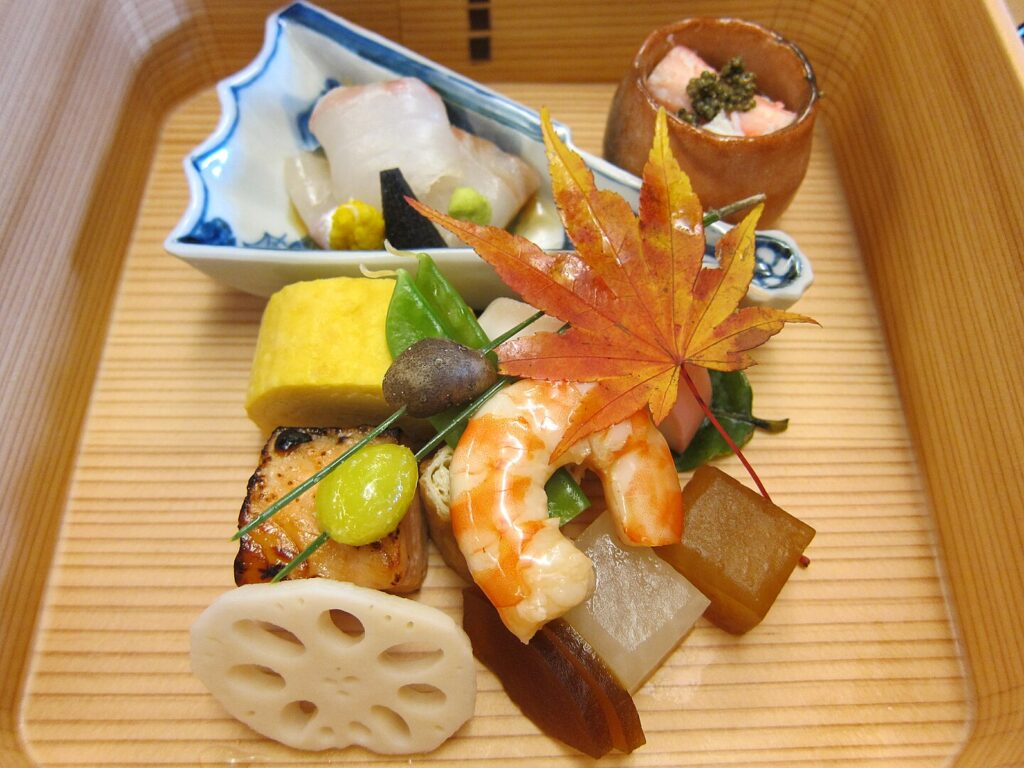
Modern Japanese cuisine incorporating Ieyasu’s dietary wisdom. Yuya Tamai – https://www.flickr.com/photos/tamaiyuya/22652717101/, CC BY 2.0, via Link
Surprisingly, many of Ieyasu’s dietary practices align with modern nutritional and health science findings. Here are some of Ieyasu’s dietary wisdoms that are still applicable today:
- Appropriate Meal Portions: “Hara hachi bu” is still recommended today for preventing obesity and maintaining health.
- Balanced Diet: Ieyasu’s practice of incorporating a variety of foods aligns with modern nutritional balance guidelines.
- Regular Meals: The habit of having three regular meals a day is still considered important for maintaining a healthy life rhythm in modern times.
- Local and Seasonal Consumption: The idea of using local, seasonal ingredients aligns with modern trends in sustainable eating.
- Stress Management: Ieyasu also emphasized enjoying meals. This is an important element from the perspective of modern stress management.
Conclusion
Tokugawa Ieyasu’s dietary practices are not just a personal health management method, but an important legacy that greatly influenced Japanese food culture and health consciousness. His practices were very advanced, based on the latest medical knowledge of the time and his own experiences.
It’s noteworthy that many of Ieyasu’s dietary practices align with modern scientific findings. This demonstrates his keen observational skills and insight, and suggests that universal truths are contained within traditional Japanese food culture and health consciousness.
In modern society, we face problems such as the increase in lifestyle-related diseases and disrupted eating habits. In such times, perhaps there is much to learn from Tokugawa Ieyasu’s dietary practices. Ieyasu’s teachings such as “hara hachi bu,” “balanced diet,” and “regular eating habits” are still valid health wisdom today.
Of course, there are many significant differences between Ieyasu’s time and the present in terms of types of food, cooking methods, living environments, and more. However, the fundamental idea of maintaining health through diet and leading a rich life is valuable beyond time.
Tokugawa Ieyasu’s dietary practices are not just an interesting historical episode, but a valuable legacy that offers many suggestions for us living in the modern era. By interpreting this wisdom in a modern context and incorporating it into our own lives, perhaps we can lead healthier and richer lives.
What Was Tokugawa Ieyasu’s Longevity Health Method?
The Health Method That Long-lived Warring States Daimyo Tokugawa Ieyasu Focused on After Retirement
The Shogun’s Table — What Did Ieyasu Eat?
Tokugawa Ieyasu – shogun of Japan
TOKUGAWA IEYASU AND THE TOKUGAWA SHOGUNATE
